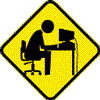
Computer not recognizing External Hard Drive

Best Answer SpywareDr , 07 April 2019 - 11:33 AM
Is the external drive being assigned a drive letter? To check and see, press [WindowsLogoKey]+[R], type in diskmgmt.msc and press [Enter]. If the drive does not have a drive letter assigned, right-... Go to the full post »
#1

 Posted 07 April 2019 - 03:31 AM
Posted 07 April 2019 - 03:31 AM

#2

 Posted 07 April 2019 - 05:42 AM
Posted 07 April 2019 - 05:42 AM

Hello MasterJ,
What version of Windows are you running on the working computer.
#3

 Posted 07 April 2019 - 11:33 AM
Posted 07 April 2019 - 11:33 AM

Is the external drive being assigned a drive letter? To check and see, press [WindowsLogoKey]+[R], type in diskmgmt.msc and press [Enter]. If the drive does not have a drive letter assigned, right-click the drive, select "Change Drive Letters and Paths...", click "Add", make sure "Assign the following drive letter" is selected, pick an unused drive letter from the pull-down on the right and then click "Ok". You should now be able to see that drive (letter) listed in File Explorer ([WindowsLogoKey]+[E]).
#4

 Posted 10 April 2019 - 05:53 AM
Posted 10 April 2019 - 05:53 AM

That's my thought SpywareDr! A missing drive letter.
#5

 Posted 10 April 2019 - 06:28 AM
Posted 10 April 2019 - 06:28 AM

Looks like we may never know folks, I asked about the version of OS so that I could post the specific steps for getting a screenshot of Disk Manager which would have confirmed what you both suspect ![]()
#6

 Posted 10 April 2019 - 06:43 AM
Posted 10 April 2019 - 06:43 AM

With as many posts as the OP has, I would suspect they'll be back ... hope so anyway.
#7

 Posted 25 May 2019 - 09:54 AM
Posted 25 May 2019 - 09:54 AM

Hey all. Apologies for the delay. It's been my busy season at work, so a lot of things have fallen by the wayside. I used to be really active back around 2005-2006 in the malware removal forums, but have only been back a handful of times since.
Assigning a letter through disk management worked. Thank you!
#8

 Posted 26 May 2019 - 06:08 AM
Posted 26 May 2019 - 06:08 AM

Glad you got it sorted and thanks for letting us know that assistance was no longer required ![]()
Similar Topics
0 user(s) are reading this topic
0 members, 0 guests, 0 anonymous users
As Featured On:















 Sign In
Sign In Create Account
Create Account

